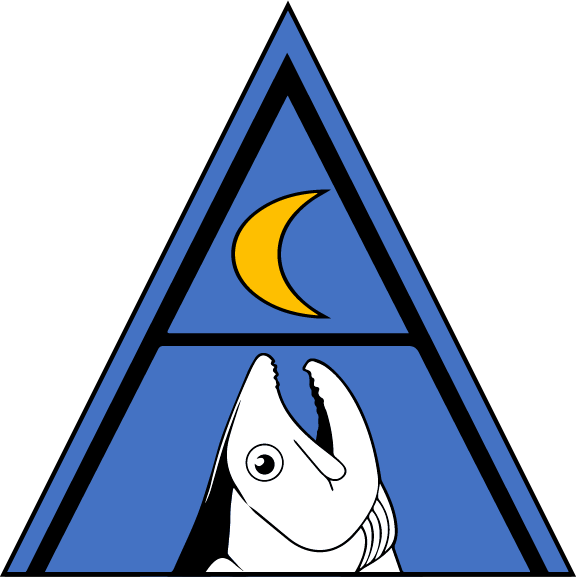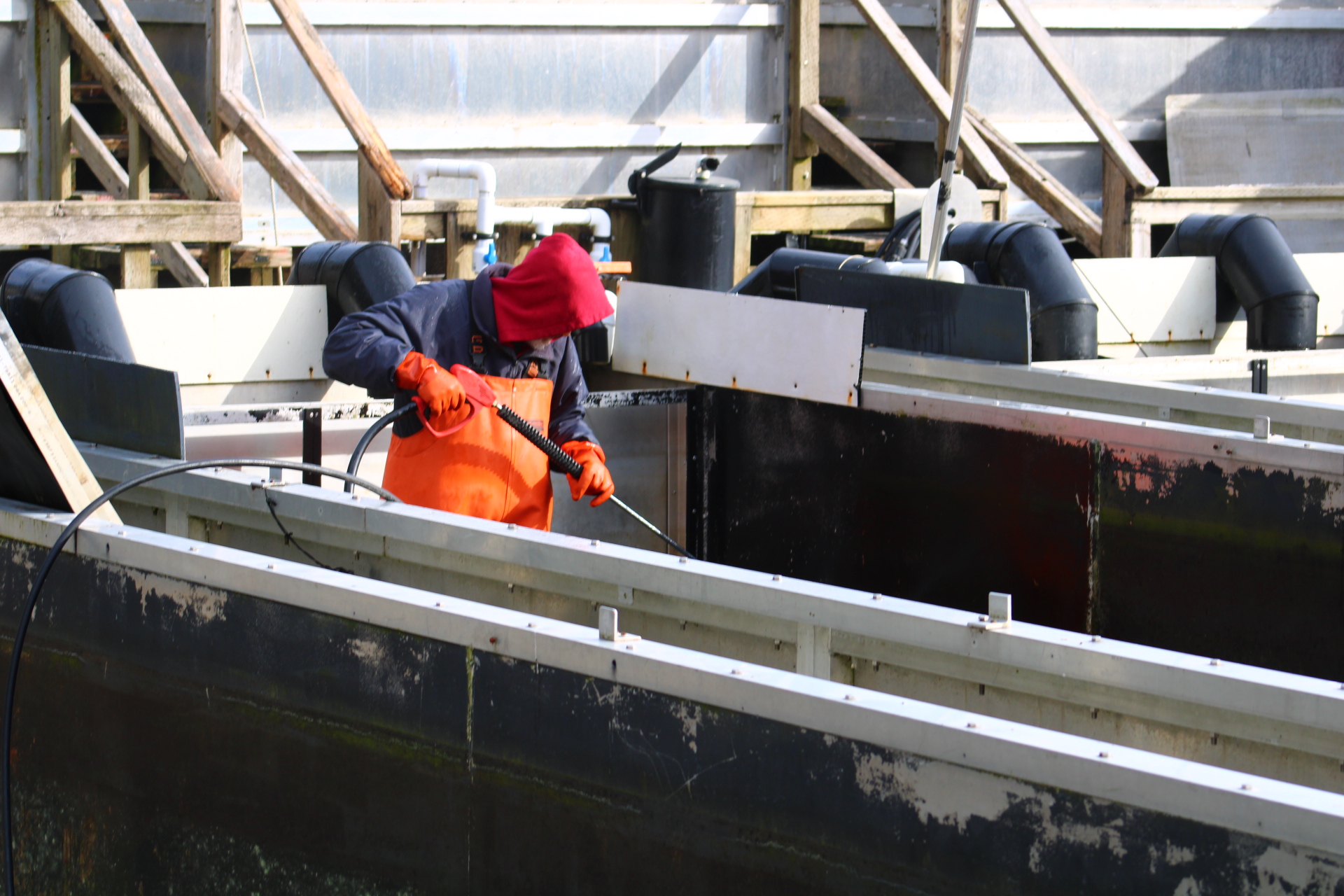The hatchery annually collects eggs from three species of Pacific salmon; pink, chum, and coho. These eggs are hatched and raised in freshwater incubators, raceway ponds, and saltwater net pens before their release into the ocean. As adults ready to spawn, the salmon home in on their stream of birth from during the summer and early fall, passing through the fishing grounds of commercial troll and seine fishermen as well as sport fishers. From the salmon that make their way through the common property fisheries, the hatchery conducts egg takes and cost recovery harvests on the remainder of the returning adult fish.
Egg takes occur at the same time the wild salmon spawn, beginning in July and August for kings and chums, continuing in September for pinks, and wrapping up in October for cohos. Hatchery staff may spawn as many as 15,000 adult salmon in a day. A weir at the mouth of Jetty Creek funnels these fish up a fish ladder, where they swim upstream from the saltwater bay to freshwater adult holding raceways. When the female eggs are ripe, the hatchery staff captures the salmon with electro-anesthesia and takes the eggs and milt from them. The eggs are fertilized immediately and placed into the incubator boxes, where upwelling freshwater emulates natural stream incubating conditions. Over the winter, the hatchery staff tends to the eggs to keep them healthy as they hatch into alevins and settle into simulated gravel substrate to subsist from their yolk sacs.
The different salmon species emerge from the incubators one after another during the winter and are ready for short-term rearing in freshwater raceways and saltwater net pens in the bay. They are fed using commercial high-protein salmon feeds until the optimal time for release into the spring plankton blooms. From there, juveniles scatter along the shoreline to feed and grow further before heading out to sea for one to six years before returning to repeat the cycle.
The Life of a Salmon
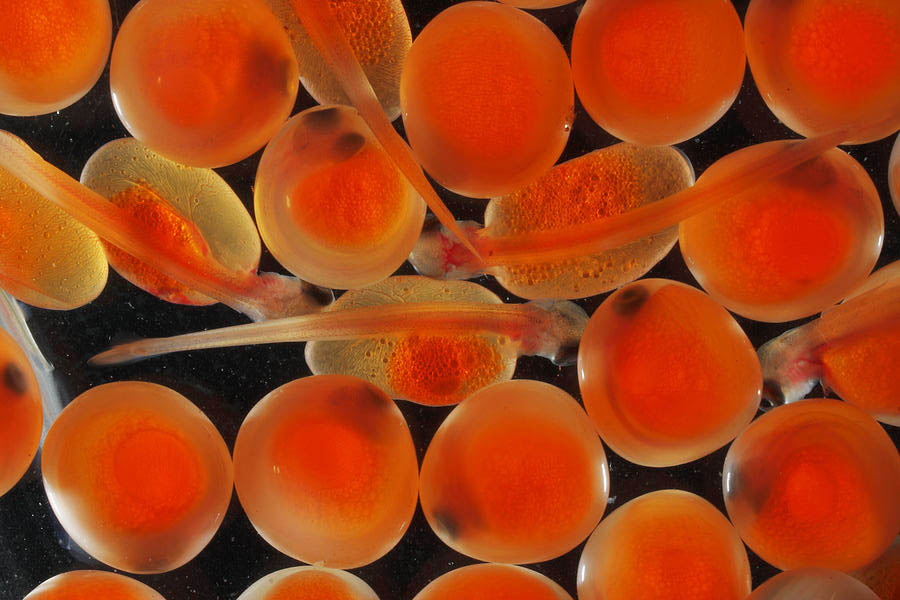
Alevin
The eggs lie in the gravel or incubator substrate through the winter, as the embryos within develop. In late winter, yolk-sac fry, or alevins, hatch.
The tiny fish carry a food supply (a sac of egg yolk) attached to their bellies. They will not leave the protection of the gravel until the yolk is used up, 12 weeks or more.
At that time, the young salmon, now called fry, swim up to the surface, gulp air to fill their swim bladders, and begin to feed.
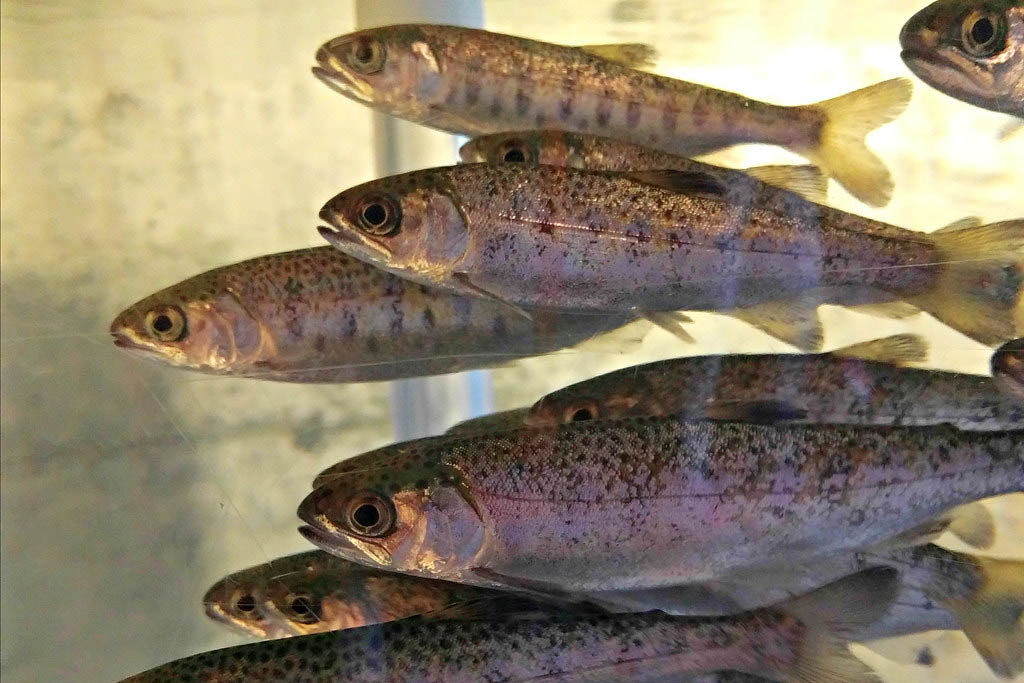
Smolt
As salmon begin to mature, they adapt for life in saltwater in an intermediary stage known as smolts. This process marks the beginning of their first migration from their home stream to the ocean.
In a process called smoltification, salmon adapt to the changes salt water causes to their bodies.
As the smolts prepare for ocean life, their appearance also changes, from the dark colors of the fry to the silvery color of adult salmon.
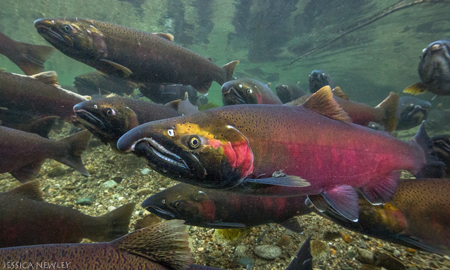
Adult
Salmon enter the ocean as young, or juvenile, adults and leave it as mature adults, ready to spawn.
The length of time salmon spend in saltwater depends on how old they were when they entered, their species, marine conditions, and other factors. Their travels in the ocean are similarly variable, and one of the least understood parts of their lives.
When they are sexually mature, salmon obey their homing instinct and travel back to their natal streams to spawn. It is an arduous journey, and only the toughest and luckiest salmon complete it.
AKI Scope & Considerations
The Port Armstrong Hatchery is permitted by the Alaska Department of Fish and Game to take up to 105 million pink eggs, 60 million chum eggs, and 6 million combined coho and king eggs (of which kings are limited to 2 million) annually. After hatching, the salmon fry are ponded into freshwater raceways and then into saltwater net pens for short-term rearing before release into the wild to join their wild river salmon relatives at sea. Like all salmon, these fish home in on their natal streams when returning at maturity to spawn in freshwater, producing their next generation of offspring.
As with all wild salmon, marine survivals depend on ocean conditions and predator pressure and vary radically from year to year. Hatchery salmon returns usually mirror the returns of the wild runs in the area, influenced by the same factors. The egg takes can also vary depending upon the strength of the returns to the hatchery, but can never exceed the permitted levels.
